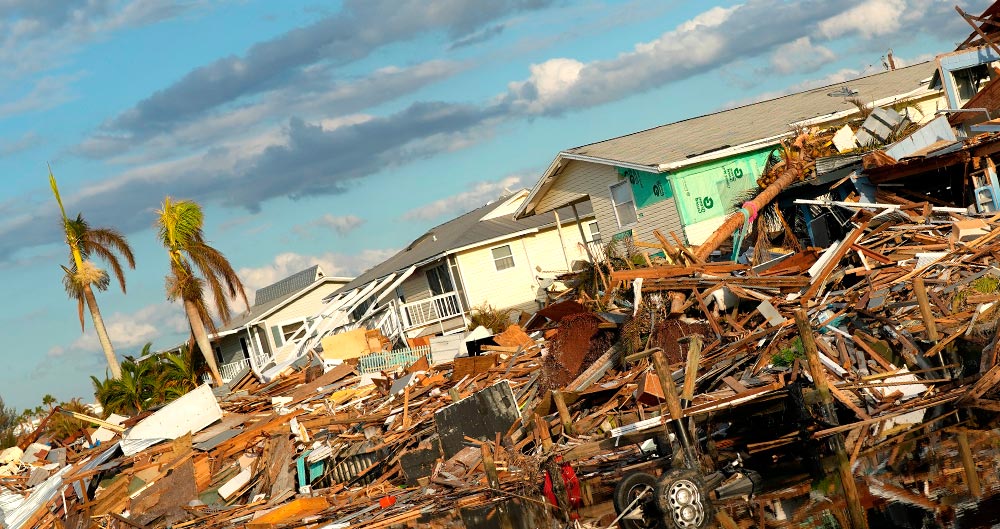S&P Global has raised its view of the global reinsurance sector to stable from negative, due to higher reinsurance rates and increasing investment income, while Moody’s kept its outlook for the sector stable.
The COVID-19 pandemic, war, inflation and climate change-fuelled natural catastrophes have put upward pressure on reinsurance rates in recent years.
As per a new report from Fitch Ratings, reinsurance rate increases for property catastrophe business are likely to slow to below 10% on average when contracts are renewed in January 2024, though underlying profitability for the sector is still expected to improve throughout the year.
Fitch forecasts the sector’s combined ratio to be 94% for 2024 and expects its near-term return on capital to exceed its 8%-10% cost of capital.
Traditional reinsurers’ have greater appetite

Traditional reinsurers’ have greater appetite for these layers, and selective capital inflows from alternative capital providers will supplement the supply of cover. This should result in less upward pressure on prices than during the January 2023 renewals.
U.S. property catastrophe reinsurance rates rose by as much as 50% at July renewals, broker Gallagher Re said in a report, with states such as California and Florida increasingly hit by wildfires and hurricanes.
Price increases, and better terms and conditions in 2023, and to a lesser degree in 2024, will continue to support underwriting margins.
Normalised for major losses, we expect margins to peak in 2024, Fitch says. Investment income will continue to bolster earnings as reinvestment yields are still above average portfolio yields.
Ahead of the Jan. 1, 2024 reinsurance renewals, reinsurers’ overall appetite for US regional property catastrophe coverage remains healthy, but carriers are proving less willing to provide aggregate covers for regional property Cat risk, preferring instead to deploy capital through occurrence excess of loss (XOL) programs.
Jan. 1, 2024, reinsurance renewals look set to be less contentious and economically painful for cedents than last year, with ample property and property catastrophe capacity available, but coverage is still expected to come at a higher price
The findings are significant, as half of respondents said that from 40% to 60% of their US book renews at Jan. 1, 2024. And for 59% of reinsurer respondents, regional clients made up at least 40% of their Jan. 1, 2024 renewals.
Reinsurance pricing for natural catastrophe risks

Analytics believe reinsurance pricing for natural catastrophe risks will better reflect the impact of climate change on claims, particularly as several reinsurers are cutting back on cover for medium-sized natural catastrophe risks, making pricing less competitive.
According to Natural Disaster Trends, most natural disaster databases show a significant decline in the number of annual global events prior to 1980.
3 global drought events were among the 10 costliest disasters, which underlines the growing significance of the peril on a global scale. These occurred in the United States, Europe and China. But data analysis has not completely removed the data gap, it has made major progress in identifying a large portion of events.
S&P Global pointed in a note to rising rates and tighter terms and conditions when policies in reinsurance – insurance for insurers – were renewed during 2023. This resulted in the hardest market in decades in some lines of business.
Fitch has updated its global reinsurance forecast and anticipates the calendar-year combined ratio to improve by 5.5pp in 2023, driven by reduced cover for catastrophe losses.
The insured natural catastrophe claims are likely to exceed $100 bn again in 2023, however, global reinsurers have been far less affected than in 2022.
However, analytics forecasts the combined ratio to increase by about 2pp in 2024 as the return of more large natural catastrophe events would push the ratio up although underwriting margins excluding catastrophe losses should marginally improve.
Reinsurance rates are likely to continue to rise in all lines of business next year, according to a Moody’s survey of global property and casualty reinsurance buyers released this week, partly due to claims inflation.
Buyers see percentage reinsurance rises in the mid-single digits

Analysts at S&P Global and Moody’s expected rates to rise further in 2024, after reinsurers took the brunt of catastrophe losses in recent years.
Moody’s said healthy balance sheets also supported its stable view on reinsurers, though it said reinsurers remain vulnerable to large catastrophe losses.
Insured losses stemming from natural catastrophes rose to $50 bn in the first half of 2023, the second-highest reading since 2011, Swiss Re said.
Challenges such as elevated natural disasters, increasing cost of capital, financial market volatility, and inflation risk persist.

Fitch therefore forecasts an improvement in underlying profitability for the global reinsurance sector in 2024, and is maintaining its improving fundamental sector outlook.
Negotiated attachment points for reinsurance cover are higher, and aggregate covers less available, meaning that reinsurers bear a lower share of medium-sized natural catastrophe claims, and cedents a higher share, Fitch said.
The firm noted that it does not expect this to change much in 2024 as reinsurers’ appetite for lower layers of property catastrophe risk remains limited.









